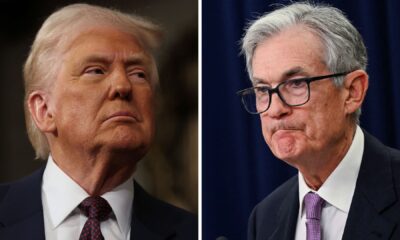M Swiet Productions | Getty Images
Many Americans are worried they’ll run out of money in retirement.
In fact, a new survey from Allianz Life finds that 64% Americans worry more about running out of money than they do about dying. Among the reasons cited for those fears include high inflation, Social Security benefits not providing enough support and high taxes.
The fear of running out of money was most prominent for Gen Xers who are approaching retirement. However, a majority of millennials and baby boomers also said they worry about their money lasting, according to the online survey of 1,000 individuals conducted between January and February.
Separately, a new Employee Benefit Research Institute report finds most retirees say they are living the lifestyle they envisioned and are able to spend money within reason. Yet more than half of those surveyed agreed at least somewhat that they spend less because of worries they will run out of money, according to the survey of more than 2,700 individuals conducted between January and February.
More from Personal Finance:
Nearing retirement? These strategies can protect from tariff volatility
Experts see higher stagflation risks. Here’s what it means for your money
Should investors dump U.S. stocks for international equities? What experts think
Meanwhile, a Northwestern Mutual survey reported that 51% of Americans think it’s “somewhat or very likely” they will outlive their savings. The survey polled 4,626 U.S. adults aged 18 and older in January.
Since those studies were conducted, new tariff policies have caused disturbance in the stock markets and prompted speculation that inflation may increase. Meanwhile, new leadership at the Social Security Administration has prompted fears about the continuity of benefits. Those headlines may negatively affect retirement confidence, experts say.
With employers now providing a 401(k) plan and other savings plans versus pensions, it is largely up to workers to manage how much they save heading into retirement and how much they spend once they reach that life stage. That responsibility can also lead to worries of running out of money in the future, experts say.
How to manage the ‘fear of outliving your resources’
Because of the unique risks every individual or couple faces when planning for retirement, the best approach is typically to transfer some of that burden to a third party, said David Blanchett, head of retirement research at PGIM DC Solutions.
Creating a guaranteed lifetime income stream that covers essential expenses can help reduce the financial impact of any events that require retirees to cut back on spending, Blanchett explained.
That should first start with delaying Social Security benefits, he said. While eligible retirees can claim benefits as early as 62, holding off up until age 70 can provide the biggest monthly benefits. Social Security is also unique in that it provides annual adjustments for inflation.
Next, retirees may want to consider buying a lifetime income annuity that can help amplify the monthly income they can expect. Admittedly, those products can be complicated to understand. Therefore Blanchett recommends starting out by comparing very basic products like single premium immediate annuities that are easier to compare.
“Unless you do those things, you just can’t get rid of that fear of outliving your resources,” Blanchett said.
Without a guaranteed income stream, retirees bear all of the financial risk themselves, he said.
“Retirement could last 10 years; it could last 40 years,” Blanchett said. “You just don’t know how long it’s going to be.”
Among retirees, there has been some hesitation to buy annuities, said Craig Copeland, EBRI’s director of wealth benefits research. Such a purchase requires parting with a lump sum of money in exchange for the promise of a guaranteed income stream.
“We see great increase in interest, but we aren’t seeing upticks in take up yet,” Copeland said. “I do think that’s going to start to change.”
What can help boost retirement confidence
To effectively plan for retirement, it helps to seek professional financial assistance, experts say.
Meanwhile, few people have a plan of their own for how they may live on the assets they’ve worked hard to accumulate, according to Kelly LaVigne, vice president of consumer insights at Allianz Life.
“This is something that you should not plan on doing on your own,” LaVigne said.
While the survey from Northwestern Mutual separately found individuals think they need $1.26 million to retire comfortably, the real number individuals need is based on their personal situation, said Kyle Menke, founder and wealth management advisor at Menke Financial, a Northwestern Mutual company.
In thinking about how life will look in 30 years, there are a variety of things to consider, Menke said. This includes stock market returns, taxes, inflation and medical expenses, he said.
Even people who have enough money for retirement often don’t feel confident in their ability to manage all of those factors on their own, he said. Financial advisors have the ability to run different simulations and stress test a plan, which can help give retirees and aspiring retirees the confidence they’re lacking.
“I think that’s where the biggest gap is,” said Menke, referring to the confidence Americans are lacking without a plan.


 Economics1 week ago
Economics1 week ago
 Personal Finance1 week ago
Personal Finance1 week ago
 Blog Post7 days ago
Blog Post7 days ago
 Economics6 days ago
Economics6 days ago
 Economics1 week ago
Economics1 week ago
 Economics1 week ago
Economics1 week ago
 Economics6 days ago
Economics6 days ago
 Economics1 week ago
Economics1 week ago












